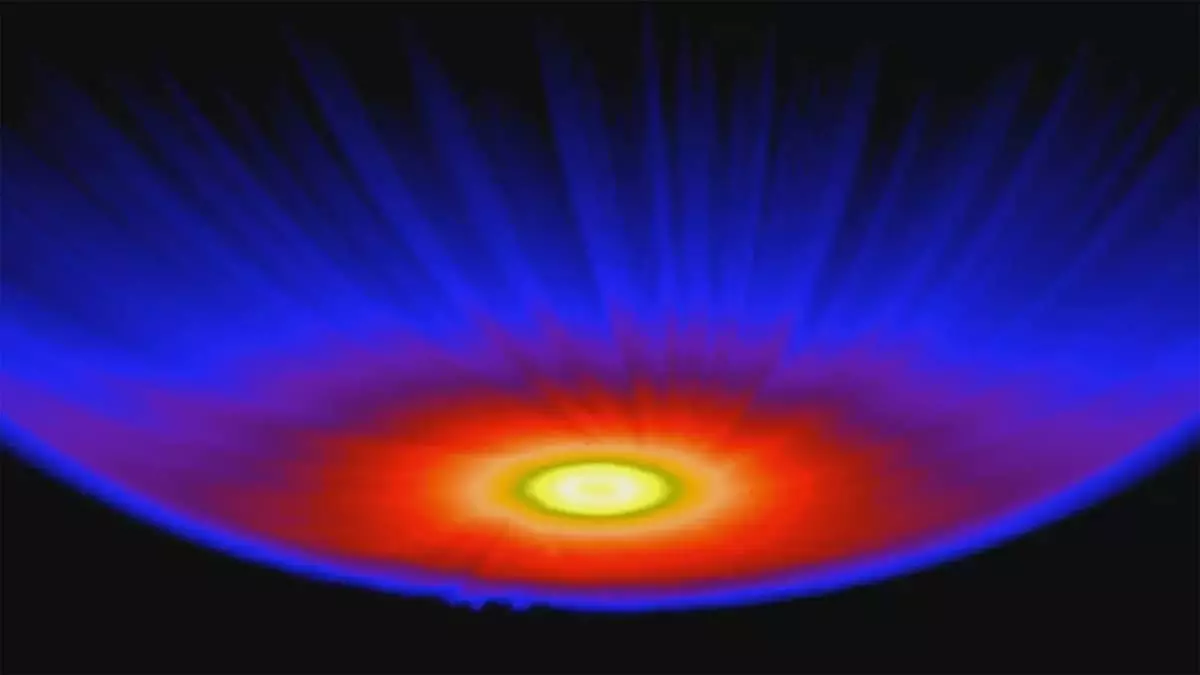Recent advances in astrophysics have led to groundbreaking discoveries regarding the astrospheres of stars resembling our Sun. During the 25 Years of Science with Chandra symposium on December 3, 2024, astronomers announced a significant finding: the detection of an astrosphere around a star designated HD 61005. This astrosphere not only deepens our understanding of stellar evolution but also provides a glimpse into the protective mechanisms that shield planetary systems from the wrath of cosmic radiation.
An astrosphere is essentially a bubble of ionized gas generated by the stellar wind – this continuous outflow of charged particles emanates from a star. This protective shell plays a critical role in safeguarding celestial bodies within its radius against high-energy cosmic rays, creating a more stable environment for potential life. The heliosphere of our Sun serves as a prime example, extending well beyond the orbit of Pluto and acting as a buffer against cosmic threats.
The star HD 61005, known informally as “The Moth,” was meticulously chosen for this study due to its resemblance in size and mass to the Sun, along with its youthful age of approximately 100 million years. Such early-stage stars typically exhibit stronger stellar winds, thereby offering an ideal scenario for studying the intricacies of astrosphere formation. The unique morphology of HD 61005, characterized by a wing-like dust disk, adds another layer of intrigue to this investigation and highlights the star’s rapid transit through a dense interstellar gas cloud, moving at about 10 kilometers per second.
Utilizing observations from NASA’s Chandra X-ray Observatory, researchers discovered a halo of X-rays enveloping HD 61005. This halo is remarkable, stretching nearly one hundred times the extent of the Sun’s heliosphere. Interestingly, contrary to initial expectations, the observed astrosphere exhibited a spherical structure. This unexpected shape suggests that the intense stellar wind generated by HD 61005 is powerful enough to deflect external pressures, thus contributing to a stable environment.
The discovery of astrospheres around main-sequence stars not only furthers our understanding of stellar evolution but may also have implications for assessing the habitability of exoplanets. Insights gleaned from the behavior of HD 61005 and its astrosphere could shed light on the early environmental conditions experienced by our own Earth and potentially other rocky planets. By comprehending how such protective structures evolve and function, we can better gauge the safety of planetary systems against interstellar radiation.
The detection of an astrosphere around HD 61005 represents a pivotal moment in astrophysics. It enhances our grasp of the complex relationship between stellar phenomena and the development of planetary systems. As research continues to unfold, the implications of this discovery could revolutionize how we perceive the evolution of stars and the conditions necessary for life beyond our solar system. Understanding these celestial dynamics is crucial for future explorations into the cosmos and the ongoing quest to find habitable worlds orbiting stars like our Sun.

